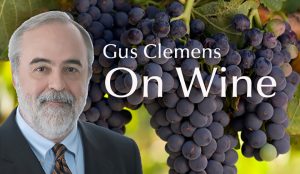The heart of America’s most important wine region went up in flames this fall. Except, that is not exactly what happened.

Napa and Sonoma have some 900 wineries, not counting wineries that are brands without buildings or estate vineyards. Less than a dozen wineries were destroyed, maybe 15 damaged.
More than 90 percent of the grapes had been harvested before the fires. It will be interesting to discover how smoke may—and it is a big may—affect taste. Many of the grapes were fermenting and carbon dioxide created during fermentation shields the juice from smoke. Juice already fermented was safely in tanks and barrels.
As for the American wine industry, Napa-Sonoma make the most famous wines, but they make only ten percent of California’s wines, so worst case is loss of one percent of California’s 2017 wine production.
Many wineries are configured so there is a “defensible space” around them—100 feet or more where there is no flammable material such as dry grass and trees. This space played a key role in saving many wineries.
Vineyards also act as a fire break. Vines are full of moisture at harvest and many growers have moved away from wooden posts for trellises, so there is just not that much flammable material on a vineyard to begin with. In addition to the defensible space around the winery, vineyards provided additional protection.
Wind-driven firebrands did affect outlying buildings and decorative entrances—the wineries knew they could sacrifice those non-essential structures while they defended the winery, many of which are made of stone, concrete, or metal anyway and harder to ignite.
If there is damage to wines, it most likely came from loss of power and access. Temperature controls in fermentation tanks, punchdowns, human monitoring of the process was interrupted. If the wines of 2017 are affected it will be from that more than from smoke.
Damage came not to wineries or vineyards, it came to homes and humans. Couples died in each other’s arms as the fires raced through city blocks. Wine workers lost everything but their lives. They will come back. They would not be in the wine business if they were made of anything less.
Last round: In wine there is wisdom. In beer, freedom. In water, bacteria. You make the call.
Email Gus at wine@cwadv.com. Facebook: Gus Clemens on Wine. Twitter: @gusclemens.
